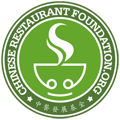According to the magazine Chinese Restaurant News, there are nearly 41,000 Chinese restaurants in the United States, three times the number of McDonalds franchise units (and at $17 billion in annual sales, at a par with the gargantuan hamburger chain). Chinese food has long been available in a form that suits American tastes (sometimes called “Chinese-American food”), as well as in varieties that more closely resemble the various cuisines actually served in China and in Chinese communities around the world. In restaurants in large cities like New York and San Francisco, both types of food may be available, sometimes in the same restaurant.
During the nineteenth century, thousands of Chinese workers came to the western United States to build railroads, dig mines, and perform other types of hard industrial work. The early California “chow chows” were simple restaurants run by Cantonese Chinese to feed their Chinese compatriots; soon Chinese restaurateurs began to cook for American workmen, altering their dishes not only to satisfy American tastes but also to better avail themselves of local ingredients. The Chinese Exclusion Act of 1882 barred further immigration, but Chinese people were already ensconced in the restaurant trade, and settled in Chinese neighborhoods in the big cities.
While groceries and restaurants in large city Chinese neighborhoods have always catered to the authentic Chinese food culture, over the course of the first two-thirds of the twentieth century a form of Chinese-American food became part of the eating experience for Americans all over the country. The Chinese restaurant, usually influenced by the Cantonese cuisine of south-eastern China, offered tasty, inexpensive dishes. Whether or not it had sit-down service, it almost always offered delivery or at least pick-up; the food “to-go” would be sent out in distinctive types of containers used almost exclusively by the Chinese restaurant trade.
Staple Chinese-American dishes include Wanton and Egg Drop Soup, Fried Rice (incorporating chopped-up meats, most frequently pork), Egg Foo Young (a thick omelet served in a brown sauce), Egg Rolls, Glazed Spare Ribs, Chow Mein, Moo Goo Gai Pan (sautéed chicken with crispy vegetables in a white sauce), various Lo Mein or noodle dishes, several “sweet and sour” items, Moo Shu Pork (a light mixture of meat and vegetables wrapped in a pancake), and a great number of dishes consisting essentially of stir fried meat, fish or chicken with Chinese or western vegetables, to be served over a mound of white rice. Vegetables known only in the United States—carrots, American onions, broccoli, tomatoes—were widely used in an effort to cater to American tastes.
Two totally American inventions, Chop Suey (meat and vegetables in a brown sauce) and the Fortune Cookie, were ubiquitous. The restaurant table offered crispy fried noodles, salty soy sauce, hot Chinese mustard, and sweet “duck sauce;” these extras were also available in packet form for what became known as “take-out Chinese.” The restaurants, plain or sumptuous, all made an attempt to suggest Chinese decorative motifs: black lacquered furniture, ornate lanterns, Chinese scrolls on the walls, Chinese or mock-Chinese plates, cups and bowls. The local Chinese restaurant might offer special “family” combinations leading to the iconic phrase “Choice of three from Column A and two from Column B” and its variants. All these types of foods are still widely available in the United States.
Concurrent with the heyday of this hybrid cuisine, American food companies, using brands with Chinese-sounding invented names like La Choy and Chung King, began offering canned “Chinese style” bean sprouts, water chestnuts, mandarin orange segments, and crispy noodles, bottled soy and duck sauces, frozen egg rolls, fried rice and other dishes in this mode for home use.
Another facet of the traditional Chinese-American restaurant is that it often used large quantities of the food additive MSG (monosodium glutamate), to which many Americans found they were overly sensitive, leading to a condition popularly called “Chinese restaurant syndrome” in which sufferers complain of dehydration, headaches, drowsiness, nausea, bloating and other symptoms. As a response to this, many restaurants now advertise they are “MSG-free.”
Two closely spaced events, however, would change the face of Chinese food in America forever. In 1965, immigration laws were dramatically liberalized, opening up the United States to large scale Chinese immigration. In 1972, American President Richard Nixon visited China. A growing population of food conscious Americans began to seek a more authentic “ethnic” dining experience; enterprising Chinese chefs were there to give it to them. “Dim Sum,” a tradition of eating many small dishes like dumplings, became popular. Hong Kong, Szechwan, Hunan, Shanghai and Taiwanese restaurants now abound in large cities, patronized by both Chinese and western customers, though there are still some foods—chicken feet comes to mind—that westerners have never much taken to.
Chinese farms in the United States now produce traditional vegetables like the cabbage-like bok choy, Chinese broccoli, yu choy, and bean sprouts to satisfy the demands of authentic Chinese cooking, which stresses vegetables above protein foods. Traditional Chinese chilies, spices and specialty sauce mixtures are imported, as are luxury ingredients like shark fins.
Though most Chinese restaurants in the United States are individually or family owned, there are a number of restaurant chains offering Chinese food to American tastes. One of the largest fancy dinner chains is the comfortable P.F. Chang’s China Bistro, whose owners also operate the trendy Pei Wei Asian Diner chain. Panda Express is a large, nationwide Chinese fast-food chain with more than 800 locations. Over the past few decades, the all-you-can eat Chinese buffet has become a popular concept.
Though American tastes still dictate the content of most Chinese menus outside the largest cities, Chinese-American food has become more varied since the new immigration began (if anything, to compete with the dozens of cuisines that have also become prevalent as a result of the same immigration liberalization: Thai, Indian, Vietnamese, Japanese, Korean, Indonesian, to name just a few of the Asian varieties). A form of restaurant called “Mongolian Barbecue” allows customers to choose their meats and ingredients and cook them or have them cooked on special grills right at their tables. The Chinese menu will nearly always feature a “hot” option in deference to the Szechwan and Hunan traditions. Catering to American health concerns, restaurants also now frequently offer dishes that are steamed instead of fried in oil, and vegetarian options. The dread MSG is far less prevalent.
In addition to its luncheon specials and appetizers, a community Chinese restaurant (in this case, chosen at random) offers, as is typical, two types of main dishes. The first generally is listed by type of protein food used as a base. Beef, for example, is offered with mushrooms, scallions, Chinese vegetables, snow peas, broccoli, oyster sauce, curry sauce, in a moo shoo option with pancakes, with garlic sauce, and with peanuts. A similar array of roast pork, shrimp, and chicken dishes are produced; chicken, beef and pork have a sweet and sour option as well. Fried rice and Egg Foo Young are available with meat, fish or vegetables. Vegetarian options include combinations of the same array of vegetables, plus bean curd: steamed, deep fried, or stir-fried. Chow Mein (crisp noodles), Lo Mein (thin soft noodles), and Chow Fun (wide soft noodles) are also available in the usual combinations.
The second type of main dish is the specialty dish, typically more expensive that the simpler combinations. Some examples from just a single restaurant: Orange Flavor Beef, Hunan Triple Delight (chicken, beef, and shrimp with green vegetables in a spicy Hunan sauce), Lemon Chicken, Happy Family (beef, pork, shrimp and chicken in a thick brown sauce), Ginger Fried Shredded Beef, Seafood Combination (shrimp, scallops, and lobster meat), Marinated Duck, Scallop and Beef (with broccoli, straw mushrooms, baby corn and green pepper in a garlic sauce), Steak Kew (sizzling beef sautéed with water chestnuts and mushrooms), and Butterfly Shrimp (battered and deep fried).
Unlike other popular ethnic cuisines like Italian and Mexican, authentic Chinese food is not prepared in the American home on a regular basis, though home cooks may use the Chinese wok pan for simple stir-fry dishes. Authentic Chinese cuisine usually calls for a level of heat unknown in Western cooking. The quick flash fry, on a high-BTU restaurant stove, seals in flavors in a way almost impossible to match in a non-professional kitchen.
Source:http://www.lifeintheusa.com/food/chinese.htm






